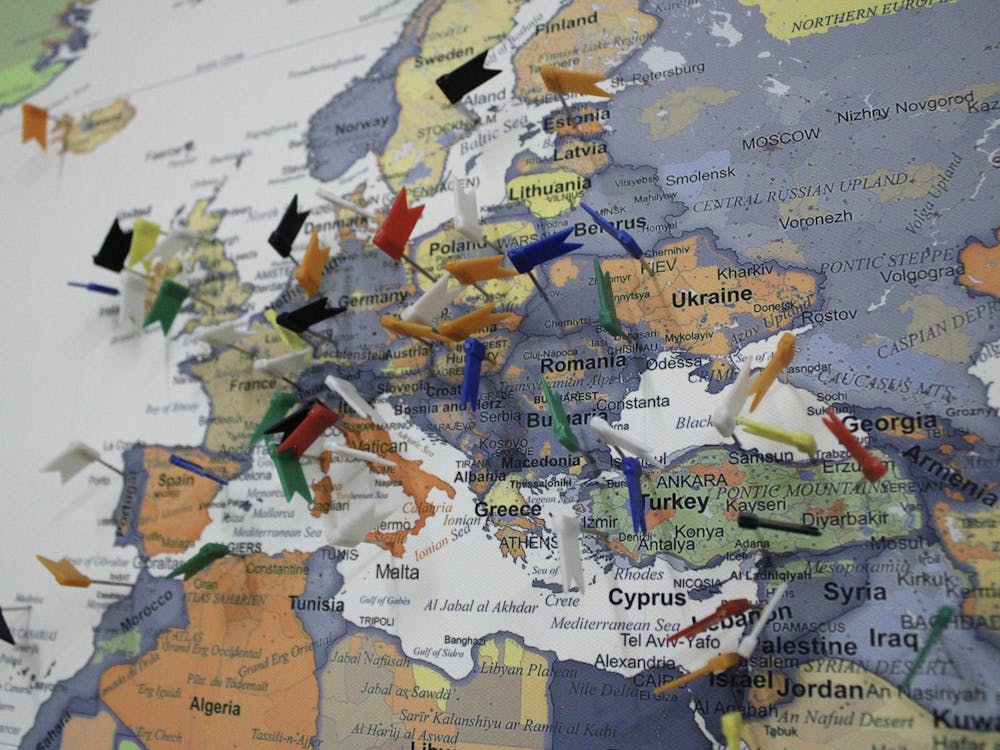JOE FRANTICALLY arrives a few minutes late to school, having forgotten to set his alarm after going to bed in the wee hours of the morning. In his rush, Joe is stopped promptly at the door by a security guard.
"Student ID card please," the guard says. As Joe rips through his bag to find his missing ID, the security guard tells him that the t-shirt he is wearing is unacceptable because the design looks like it could be gang-related. Amid all this ridiculous confusion, Joe imagines the teacher of his no-tardies-tolerated class calling roll and counting his now-extreme lateness as an absence.
Believe it or not, all this frustration and inconvenience to Joe is in the name of security. Schools are trying any methods necessary to protect their students, but the American Civil Liberties Union fears -- and rightfully so -- that these new security measures come dangerously close to violating students' civil rights.
In the wake of last year's string of violent outbursts in schools across the country, educators and government officials have made it their mission to make schools safer for students. Numerous experts have voiced their opinions on how to rid America's schools of violence -- each time delving further and further into the adolescent mind and outlining the causes of and cures for teen violence.
Most recently, school administrators have concluded that one of the most effective ways to combat random acts of violence in schools is to increase security to the point of making school buildings feel like a prison.
Schools across the nation are installing metal detectors, requiring students to wear identification badges, and installing cameras to monitor students in and outside school buildings. Still other public schools are implementing strict dress codes and forbidding certain attire, like a school in Allen, Texas, that suspended students for refusing to remove black armbands they wore to mourn Columbine victims.
Some schools have punished students for expressing discontent with the school on the Internet. Last year, a student in Stow, Ohio, was suspended from school for a personal web site entitled "Stow High School Sucks." Ray Vasvari, the Ohio ACLU's legal director, termed this an "invasion of student rights" ("ACLU explores security, students' rights," USA Today, Sept. 5).
The ACLU has a valid point -- the Supreme Court ruled in 1969 that students do not necessarily relinquish civil rights when they set foot on school grounds. Instead, children and young adults can and should criticize the institutions they attend, in order to foster continual improvement.
Clothing and accessory restrictions also have been popular in the attempt to rid schools of crime. While symbols like those that represent gangs or illegal substances have not been allowed in the past, recently the crackdown has become excessive.
In one example, the Harrison County School Board in Mississippi prohibited a Jewish boy from wearing his Star of David pendant because it resembled a gang symbol. The ACLU sued on behalf of the student and the school board promptly reversed its decision.
The original school board decision demonstrates the unreasonable measures administrators are taking in an attempt to create safer school environments. Will symbols representing students' ethnic heritage, organizations to which they belong, or even their favorite professional sports team soon be considered gang paraphernalia? The ability and right to voice an opinion -- through speech, clothing and the like -- is valued highly in this country. A few isolated incidents should not drastically change the way we treat all students. And they certainly do not warrant the revocation of basic civil rights.
In addition, these so-called improvements to the school environment may serve to squelch the creativity and individualism that is so important to develop in adolescents. That guy who dresses all in black may look funny, but that is the way he expresses his feelings. It is far better to express himself that way than through violent actions.
Letting students move freely throughout the school building during the day may not be the safest thing to do, but it will give the kids a sense of freedom and responsibility.
The bottom line is that children cannot grow in a positive manner if they are placed under stifling conditions. Forcing kids to dress identically and flash ID badges will foster resentment towards the school, making it feel more like a prison than a school. And if kids feel like they are under lock and key and constant surveillance, normal feelings of frustration could build into more dangerous emotions.
So do the kid a favor -- forget the ID badge and let Joe go to class. Most likely, he's more afraid of his teacher than of his fellow students.
(Erin Perucci is a Cavalier Daily associate editor.)






